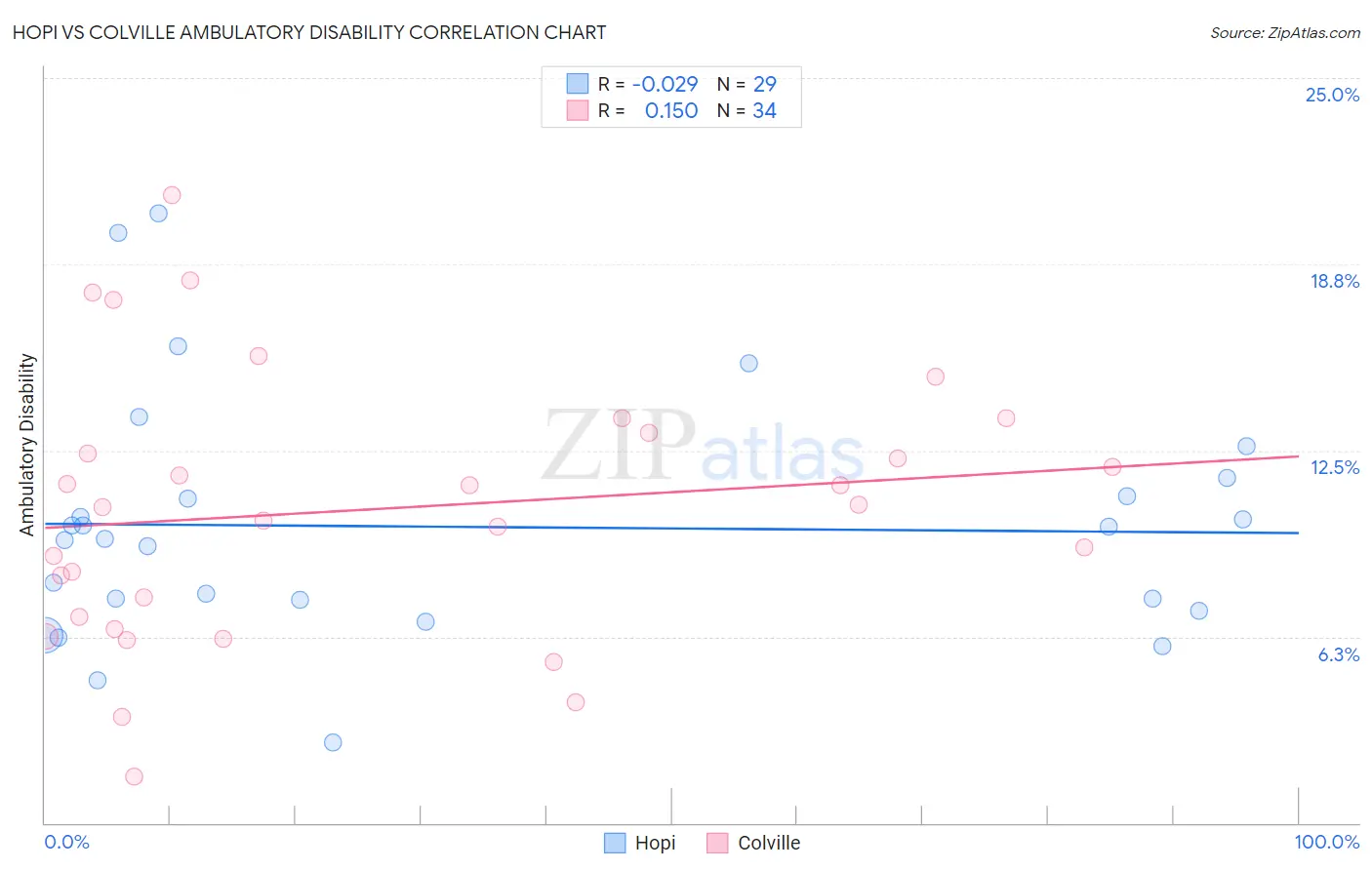Hopi vs Colville Ambulatory Disability
COMPARE
Hopi
Colville
Ambulatory Disability
Ambulatory Disability Comparison
Hopi
Colville
7.6%
AMBULATORY DISABILITY
0.0/ 100
METRIC RATING
328th/ 347
METRIC RANK
8.2%
AMBULATORY DISABILITY
0.0/ 100
METRIC RATING
338th/ 347
METRIC RANK
Hopi vs Colville Ambulatory Disability Correlation Chart
The statistical analysis conducted on geographies consisting of 74,727,187 people shows no correlation between the proportion of Hopi and percentage of population with ambulatory disability in the United States with a correlation coefficient (R) of -0.029 and weighted average of 7.6%. Similarly, the statistical analysis conducted on geographies consisting of 34,678,194 people shows a poor positive correlation between the proportion of Colville and percentage of population with ambulatory disability in the United States with a correlation coefficient (R) of 0.150 and weighted average of 8.2%, a difference of 8.2%.

Ambulatory Disability Correlation Summary
| Measurement | Hopi | Colville |
| Minimum | 2.7% | 1.6% |
| Maximum | 20.4% | 21.1% |
| Range | 17.7% | 19.5% |
| Mean | 9.9% | 10.5% |
| Median | 9.5% | 10.6% |
| Interquartile 25% (IQ1) | 7.3% | 6.9% |
| Interquartile 75% (IQ3) | 11.3% | 13.1% |
| Interquartile Range (IQR) | 4.0% | 6.2% |
| Standard Deviation (Sample) | 4.1% | 4.5% |
| Standard Deviation (Population) | 4.0% | 4.4% |
Demographics Similar to Hopi and Colville by Ambulatory Disability
In terms of ambulatory disability, the demographic groups most similar to Hopi are Pueblo (7.6%, a difference of 0.040%), Native/Alaskan (7.5%, a difference of 0.94%), Black/African American (7.5%, a difference of 0.95%), Comanche (7.5%, a difference of 1.1%), and Navajo (7.5%, a difference of 1.1%). Similarly, the demographic groups most similar to Colville are Pima (8.2%, a difference of 0.35%), Dutch West Indian (8.2%, a difference of 0.57%), Choctaw (8.3%, a difference of 1.2%), Seminole (8.0%, a difference of 2.2%), and Chickasaw (8.0%, a difference of 2.3%).
| Demographics | Rating | Rank | Ambulatory Disability |
| Americans | 0.0 /100 | #323 | Tragic 7.4% |
| Navajo | 0.0 /100 | #324 | Tragic 7.5% |
| Comanche | 0.0 /100 | #325 | Tragic 7.5% |
| Blacks/African Americans | 0.0 /100 | #326 | Tragic 7.5% |
| Natives/Alaskans | 0.0 /100 | #327 | Tragic 7.5% |
| Hopi | 0.0 /100 | #328 | Tragic 7.6% |
| Pueblo | 0.0 /100 | #329 | Tragic 7.6% |
| Paiute | 0.0 /100 | #330 | Tragic 7.7% |
| Cajuns | 0.0 /100 | #331 | Tragic 7.8% |
| Menominee | 0.0 /100 | #332 | Tragic 7.8% |
| Cherokee | 0.0 /100 | #333 | Tragic 7.9% |
| Yuman | 0.0 /100 | #334 | Tragic 7.9% |
| Chickasaw | 0.0 /100 | #335 | Tragic 8.0% |
| Seminole | 0.0 /100 | #336 | Tragic 8.0% |
| Dutch West Indians | 0.0 /100 | #337 | Tragic 8.2% |
| Colville | 0.0 /100 | #338 | Tragic 8.2% |
| Pima | 0.0 /100 | #339 | Tragic 8.2% |
| Choctaw | 0.0 /100 | #340 | Tragic 8.3% |
| Creek | 0.0 /100 | #341 | Tragic 8.5% |
| Kiowa | 0.0 /100 | #342 | Tragic 8.6% |
| Tohono O'odham | 0.0 /100 | #343 | Tragic 8.7% |